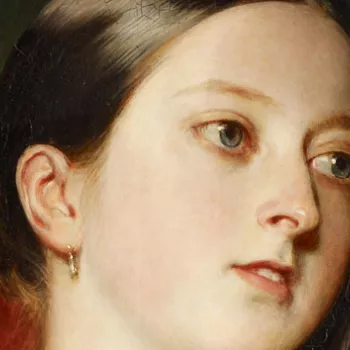Sappho and Cupid c.1851
Ivory | 64.4 x 17.6 x 17.5 cm (excluding base/stand) | RCIN 41779

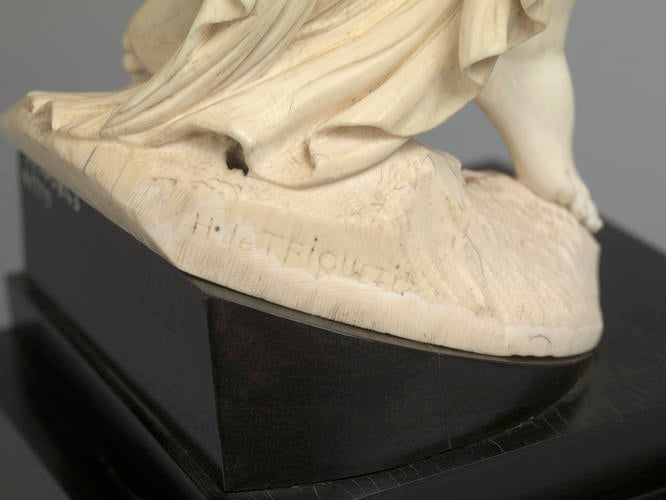
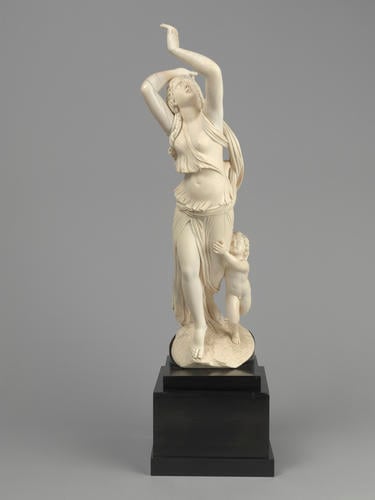
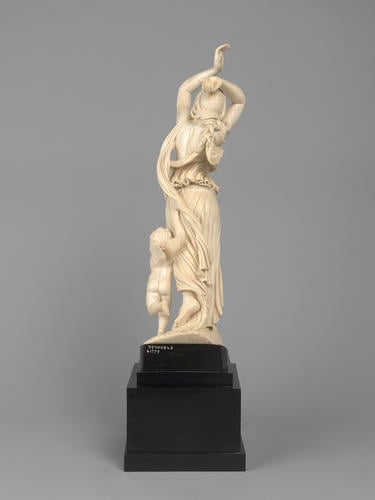

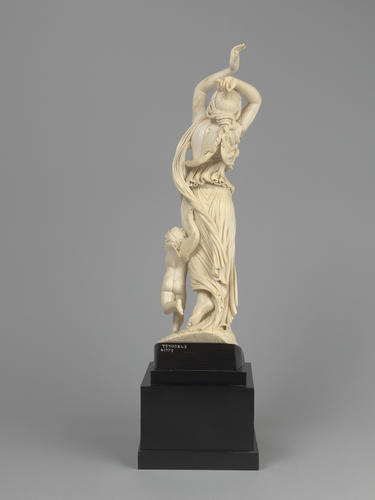
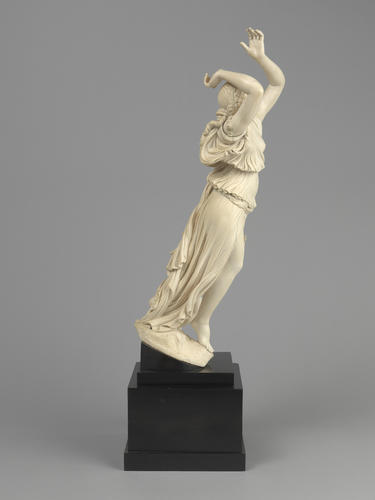




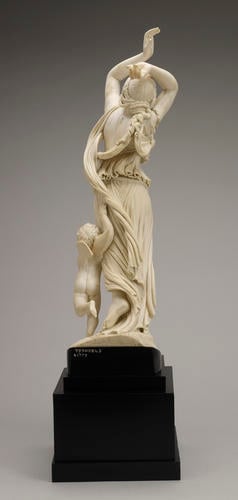

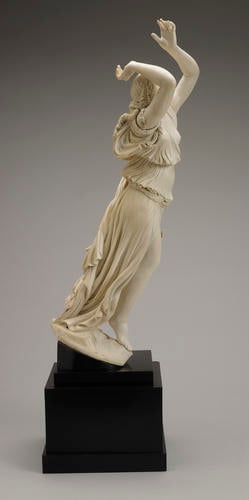
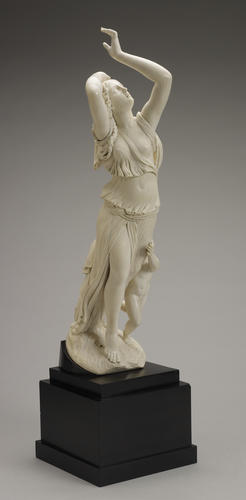
-
Queen Victoria purchased this sculpture from Henri de Triqueti as a Christmas gift for Prince Albert in 1852.
Sappho, the greatest poetess of antiquity, is depicted in a state of ecstatic grief as she prepares to throw herself from the Leucadian Rock into the sea, following her rejection by a handsome seafarer, Phaon. Cupid, the god of love, tries in vain to restrain her.
Henri de Triqueti was the second son of Michel Triquet, a native of Annecy. In 1788 Michel was raised to a barony by King Victor Amadeus III of Sardinia, in whose realm Annecy then lay, and thereafter the family name was Italianised. Henri's early training was as a painter and draughtsman, and it was as a painter that he first came to the attention of the French royal family. At the Salon of 1831 King Louis-Philippe and Queen Marie-Amélie purchased a history picture from the life of Charles VI, and the artist was quickly taken up by other members of the family, notably the duc d'Orléans and Madame Adélaïde. It was these connections that won Triqueti several major commissions, such as the bronze doors of the new church of the Madeleine in Paris and the effigy of the duc d'Orléans, who was killed in a carriage accident in 1844.
Following the ejection of Louis-Philippe in 1848, Triqueti was obliged to seek new patrons. His devout Protestant faith and his marriage in 1834 to Julia, granddaughter of the English sculptor Thomas Banks (1735-1805) and daughter of the chaplain to the British Ambassador in Paris, Edward Forster, placed him at an advantage over other French artists in the same predicament. He secured several English commissions through the Ambassador, Lord Cowley, whose younger brother was Gerald Wellesley, Dean of Windsor from 1854 to 1882.
Classical subjects are comparatively rare in Triqueti's work, which far more frequently draws on biblical or historical sources. Adept in clay and marble, he would later reclaim the art of coloured pictorial inlay in marble or tarsia, notably in the decoration of the Wolsey chapel at Windsor, rededicated by Queen Victoria in memory of Prince Albert in 1871-4. His works in ivory were carved by unknown craftsmen, most probably in Dieppe, a thriving centre for this speciality, on the basis of his terracotta models; the model for Sappho and Cupid was made in 1848. In a letter of 29 December 1852 Triqueti reported to Franz Xaver Winterhalter that he was finding ivory uneconomical because ‘half way through one finds the interior decayed, which obliges one to start again’. Sappho and Cupid was shown at the Great Exhibition on the stand of the Parisian jewellers Froment-Meurice where it was noted by Matthew Digby Wyatt as reminiscent of the eighteenth-century terracottas by artists such as Clodion (1738-1814).
In 1858 Queen Victoria had been persuaded by Lady Cowley to purchase Triqueti's marble statue Edward VI Reading the Holy Scriptures. Although two further ivory statuettes were sent to Windsor for the Queen's inspection in June 1859, she did not purchase them.
Text from Victoria & Albert: Art & Love.Provenance
Purchased from the artist through Hermann Winterhalter in 1852 by Queen Victoria for 2,700 francs (£108) (RA VIC/ADD T/232/49);
Given to Prince Albert by Queen Victoria, 24th December 1852 [Victoria & Albert: Art & Love, London, 2010, pg 460]
-
Creator(s)
(nationality)Acquirer(s)
-
Medium and techniques
Ivory
Measurements
64.4 x 17.6 x 17.5 cm (excluding base/stand)




